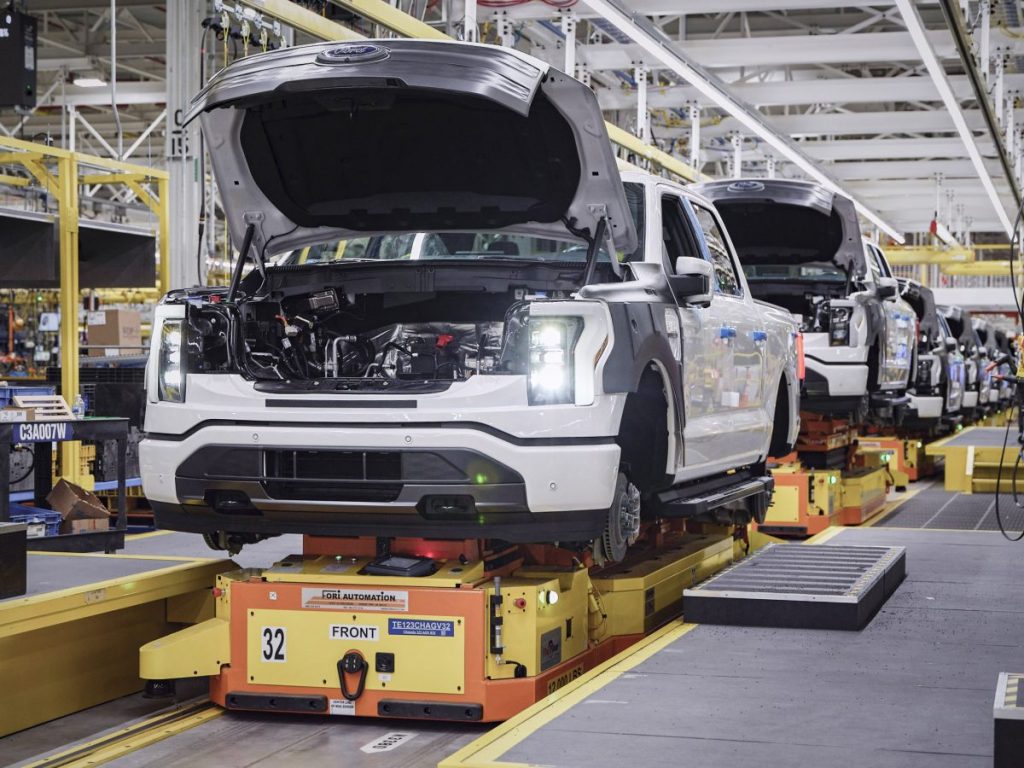According to recent reports, Ford Motor Company is expected to lose billions this year on its lineup of electric vehicles. Ford’s second-quarter earnings report forecasts a massive $4.5 billion loss from its EV division. The Dearborn, Michigan-based automaker has been aggressively ramping up its electric vehicle presence to gain an advantage in the relatively new space in the auto industry.
The car manufacturer’s electric “Ford Model e” lineup has already lost $2.8 billion in the first half of the year, where the second quarter alone saw losses of $1.8 billion. According to Ford, the losses are caused by a “pricing environment, disciplined investments in new products and capacity, and other costs.” The EV lineup’s projected full-year 2023 loss more than doubles the $2.1 billion in losses seen last year.
Ford CEO Jim Farley spoke about the inherent volatility of the EV portion of the business in the company’s quarterly earnings release. “The shift to powerful digital experiences and breakthrough EVs is underway and going to be volatile, so being able to guide customers through and adapt to the pace of adoption are big advantages for us,” said Farley. “Ford+ is making us more resilient, efficient, and profitable, which you can see in Ford Pro’s breakout second-quarter revenue improvement (22%) and EBIT margin (15%).”
Notably, the steep $4.5 billion decline was upwardly revised by $1.5 from an original outlook of $3 billion. Ford is enduring these losses despite seeing revenue gains across the entire company of 12 percent year-over-year to $45 billion. The company is also seeing higher net income and adjusted EBIT with a strong liquidity position. So, it would appear Ford’s struggles are mostly confined to its electric vehicles.
According to Farley, the lackluster adoption of EVs is slower than the company anticipated. However, Ford seeks to position itself to reap long-term first-mover advantages, where customers will eventually attach themselves to the brand.
“The near-term pace of EV adoption will be a little slower than expected, which is going to benefit early movers like Ford,” Farley explained. “EV customers are brand loyal and we’re winning lots of them with our high-volume, first-generation products; we’re making smart investments in capabilities and capacity around the world; and, while others are trying to catch up, we have clean-sheet, next-generation products in advanced development that will blow people away.”
Ford has also indicated it will focus on new hybrid vehicles that mix the benefits of electric and gas-powered cars. “You’re going to see a lot more hybrid systems from us,” the CEO said. Ford Blue, the segment that engineers and makes the popular gas and hybrid vehicles, saw strong performance in the quarterly report.
Due to the business unit’s strong pricing power and the appeal of its products, Ford Blue helped fuel growth in wholesale and revenue while contributing $2.3 billion in EBIT. The segment seeks to improve profitability over time through cost efficiencies.
However, the EV market is currently highly competitive with other car manufacturers exercising pricing power. The American Tribune reported earlier this year on Tesla, who has been accused of “weaponizing” price cuts. Other companies, such as Ford, responded by slashing the prices of their own EVs, impacting profitability.
